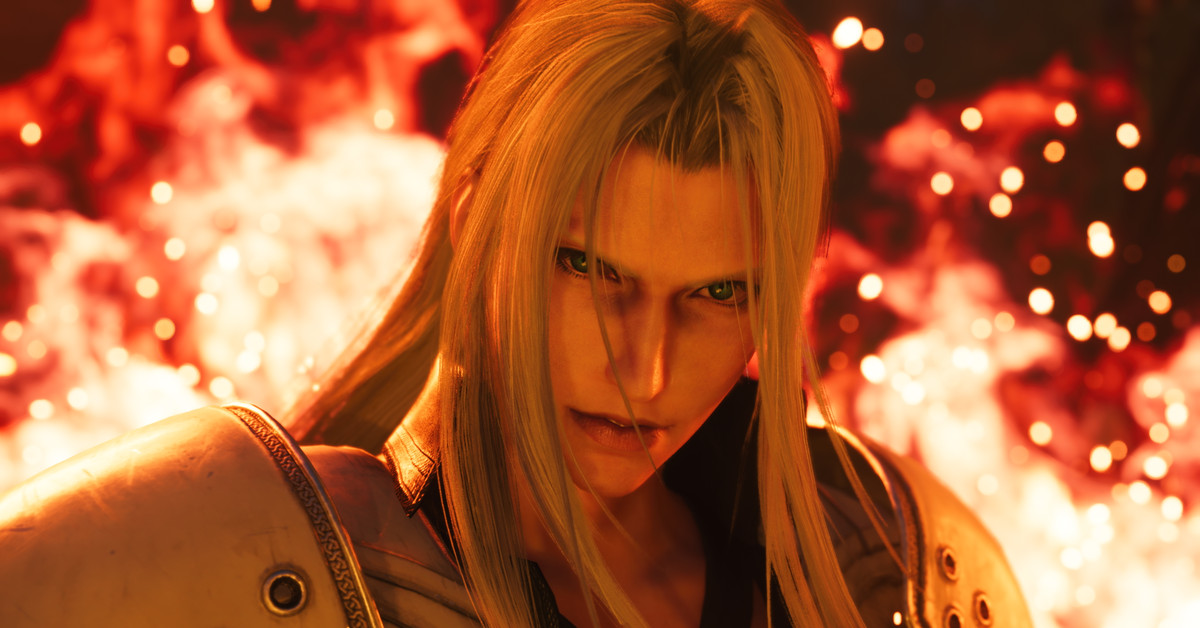It sounds strange to suggest that Final Fantasy 7 Rebirth — the second game in Square Enix’s bizarre, expansive remake project, which adapts the middle third of the 1997 original — would be a great place to start your relationship with this sprawling storyline. But honestly, I think it’s true. And it’s true because the Square Enix development team, led by original director Yoshinori Kitase as producer, has made an absolutely inspired choice for the game’s opening chapter.
Rebirth begins with a flashback that serves both as a tutorial and as an origin story for Final Fantasy 7’s hero, Cloud Strife, and its main antagonist, Sephiroth. It gets at the essence of both characters, as well as shading in some backstory for Cloud’s childhood friend Tifa Lockhart, and cuts straight to the dramatic and thematic heart of the story. It leaves some lingering questions that are key to understanding the playful, metafictional line that Kitase’s team is taking with this remake project. Plus, it’s just the right amount of wildly overwrought — a perfect introduction to Square Enix’s inimitable brand of straight-faced, mythological camp.
If you’re familiar with the original, you’ve probably figured out what I’m talking about. Yes, Rebirth begins with the Nibelheim Incident.
Nibelheim is Cloud and Tifa’s hometown, a humble village clinging to the slopes of Mount Nibel. The mountain is home to a mako reactor run by Shinra, the despotic power company, which also operates a research station out of a mansion in Nibelheim. In the events of the Incident, which takes place years before the main Final Fantasy 7 storyline, the mako reactor is malfunctioning, and Shinra’s elite footsoldier Sephiroth is sent to investigate, along with Cloud, a teenaged new recruit at the time. What they discover there puts Sephiroth on a dark path and sets the engine of the storyline in motion.
:no_upscale()/cdn.vox-cdn.com/uploads/chorus_asset/file/25269993/EN_19_ff7rebirth_SS_1208_Trailer.png)
Image: Square Enix
There are so many reasons the Nibelheim Incident works brilliantly as a starting point for Rebirth. As a flashback, it works as a blank-slate introduction for several of the main characters, without the necessity to fill in everything that happened in the first game. And since Cloud is a newbie in this sequence, the game niftily sidesteps what might have been the jarring necessity of inserting a tutorial into the middle of an ongoing story.
The Nibelheim Incident also just makes for a compelling, self-contained mission. The ascent of the mountain, climaxing in a boss fight and a dramatic reveal at the reactor, followed by a hellish descent into souped-up melodrama — this is a clearly articulated and satisfying throughline in both narrative and gameplay terms. It’s a great place to begin a game as big as Rebirth appears to be without overwhelming the player, and works just as well as a reset button if you’re rolling into it straight after a Remake playthrough.
I won’t spoil what Sephiroth and Cloud discover at the reactor. But, speaking as someone who has only hazy memories of a half-finished playthrough of the original game, plus an ambient familiarity with its most iconic characters and story beats, I will say that this opening chapter of Rebirth snapped Sephiroth into clearer focus for me than ever before: his motivation, his megalomania, his absurdly overstated cool. Seen throughout from Cloud’s awestruck perspective, Sephiroth is portrayed as a stoic, ultra-competent war hero, which only underlines how disastrous it is when he cracks. I really felt like I got it. What’s more, Sephiroth is fully playable as a member of the party for this mission, and it’s an indulgent joy to switch between Cloud and his superpowered idol in battle. The Sephiroth-Cloud dynamic — from hero and acolyte to homoerotically intense enemies — is well fleshed out, too.
:no_upscale()/cdn.vox-cdn.com/uploads/chorus_asset/file/25269980/08_EN_FF7REBIRTH_0915_PV_FIX__1_.png)
Image: Square Enix
The chapter is not completely clear-cut, however, and dangles an enticing mystery that looms over the rest of the game — just as Cloud’s recounting of the Nibelheim Incident did in the original. In Rebirth’s retelling, this chapter is framed by a voice-over conversation between Cloud and Tifa, with each of them reminiscing about the events that transpired; Barret, Aerith, and Red XIII are the listening audience (along with the player). What we play through is Cloud’s version, but after it’s over and we return to the present day, with Cloud and friends chilling in the pleasant city of Kalm, Tifa says it’s not how she remembers things happening at all. Indeed, some elements of the story seem strangely inconsistent with Cloud’s present reality. This plays into one of the original storyline’s most intriguing mysteries, and also the metafictional and multiversal elements introduced in Remake, whereby its diversions from the original plot are suggested to be the product of someone meddling with the timeline.
Rebirth’s opening chapter is an emphatic exclamation point followed by a lingering ellipsis. For this game, it’s a great scene-setter. For fans, as a lavish staging of one of the original game’s most famous what-the-fuck moments, it’s simply great wish fulfillment. For players who have a looser relationship with the story — or even no relationship at all — it’s something even better: a perfectly formed couple of hours that teaches you everything you need to know about what makes Final Fantasy 7 great.
Final Fantasy 7 Rebirth will be released for PlayStation 5 on Feb. 29.

